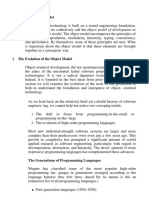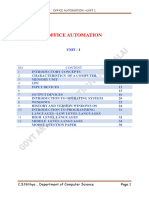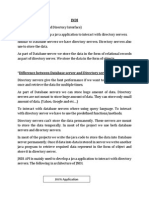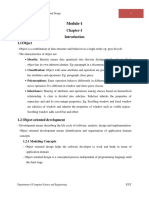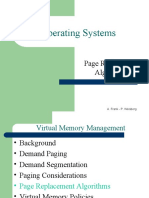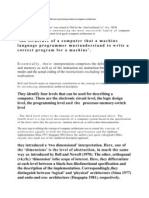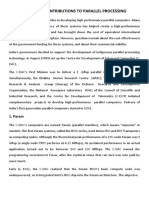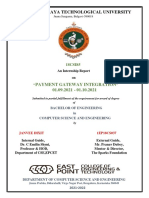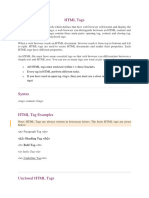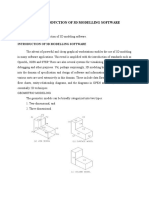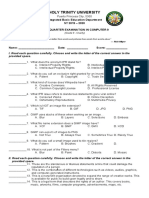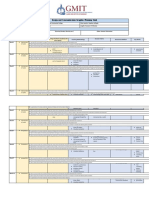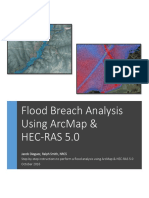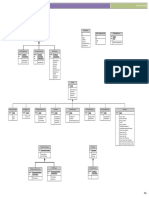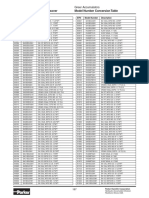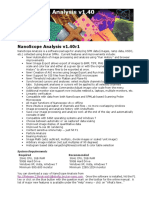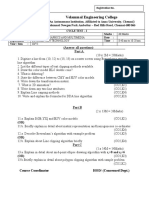0% found this document useful (0 votes)
255 views12 pagesWireframe Modeling
The document discusses wireframe modeling which is a 3D modeling technique where geometric data and topological connectivity data are used to create a skeletal representation of an object using lines and curves. Wireframe modeling allows viewing a model from any angle and generating standard views but lacks surface details and hidden line removal.
Uploaded by
ramyasree.mathCopyright
© © All Rights Reserved
We take content rights seriously. If you suspect this is your content, claim it here.
Available Formats
Download as PDF, TXT or read online on Scribd
0% found this document useful (0 votes)
255 views12 pagesWireframe Modeling
The document discusses wireframe modeling which is a 3D modeling technique where geometric data and topological connectivity data are used to create a skeletal representation of an object using lines and curves. Wireframe modeling allows viewing a model from any angle and generating standard views but lacks surface details and hidden line removal.
Uploaded by
ramyasree.mathCopyright
© © All Rights Reserved
We take content rights seriously. If you suspect this is your content, claim it here.
Available Formats
Download as PDF, TXT or read online on Scribd
/ 12


